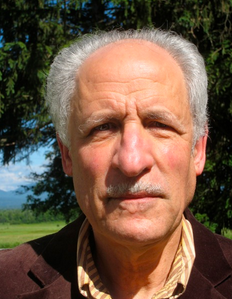The most secular state of all is Vermont, which on PCPI is virtually exactly the same as the entire U.S. -- $39,791 U.S., versus $39,736 Vermont -- and which is ranked 20th on PCPI, but which is the most liberal state (#2 below only D.C.); and this is especially interesting, because D.C. is heavily aristocratic, whereas Vermont is neither aristocratic nor theocratic; and because D.C. is 100% urban, whereas Vermont is the least-urban, most rural, state of all. (The only states that are even close to it are Maine, West Virginia, and Mississippi, all of which are below-average PCPI.)
So, whereas Vermont and D.C. are the closest on their ideology, they are the farthest apart on their urbanization (100% for D.C.; 38.2% for Vermont). A broader look at the percentage of urban population confirms that the liberal-conservative polarity does not correlate with the urban-rural polarity such as has often been supposed.
In late 2007, the Quarterly Journal of Political Science featured "Rich State, Poor State, Red State, Blue State," and the researchers (Gelman, Shor, Bafumi, and Park) found that whereas the rich tend to vote Republican and the poor tend to vote Democratic, this tendency was far stronger in poor states such as Mississippi and Alabama, than in rich states such as Connecticut and Massachusetts, where many of the poor (as well as of the rich) still believed in "the American dream" that wealth reflects merit more than it reflects greed. The researchers reported that, "we find that income matters more in red [Republican] America than in blue America. In poor states, rich people are much more likely than poor people to vote for the Republican presidential candidate, but in rich states ... income has a very low correlation with vote preference." High-income states had the largest percentage of low-income conservatives, people who assumed that the rich had more money because they were superior people. The poor in low-income states tended to believe that wealth is based more on greed than on merit. Furthermore, in low-income states, the rich were more inclined to either exploit or despise the poor, whereas the rich in wealthy states were more inclined to care about and help the poor. So: in rich states, the poor had at least some reason to respect the rich; whereas in poor states they did not. The most conservative people of all tended to be the rich who lived in enclaves of wealth surrounded by a sea of poverty. This suggests that an effective way to defeat conservatism is to eliminate vast inequalities of income and of wealth. If this hypothesis is actually true, then the Republican Party has been boosting its prospects by its war against the poor (maintaining those vast wealth-inequalities); and Democratic prospects will be enhanced by defeating this ongoing core Republican effort. In order to defeat it, however, the middle class must become won over; and, in order for the middle class to be won over, faith must first be defeated, because only faith can cause the middle class to identify with the interests of the rich against the poor. In conservative states, the middle class identify with the rich against the poor; both the aristocracy and the clergy endorse that viewpoint.
----------
Investigative historian Eric Zuesse is the author, most recently, of They're Not Even Close: The Democratic vs. Republican Economic Records, 1910-2010 , and of CHRIST'S VENTRILOQUISTS: The Event that Created Christianity .
(Note: You can view every article as one long page if you sign up as an Advocate Member, or higher).




